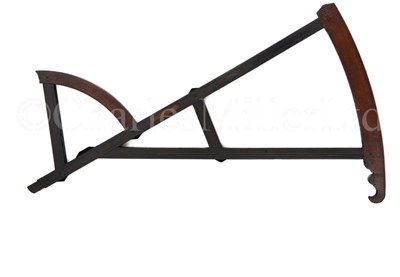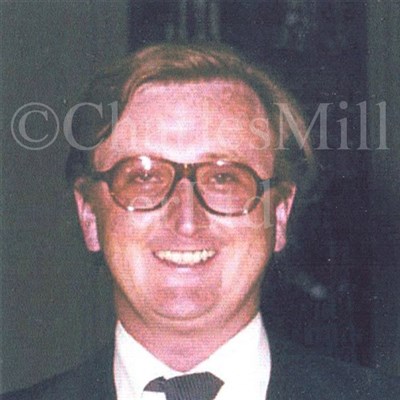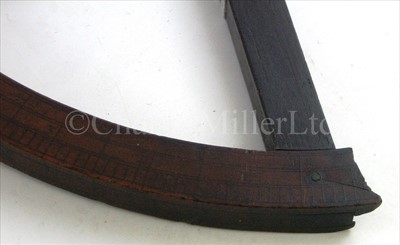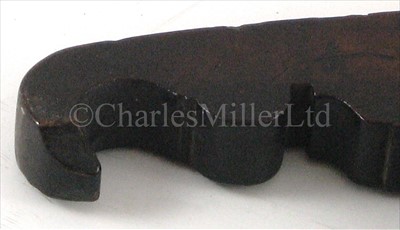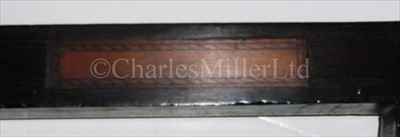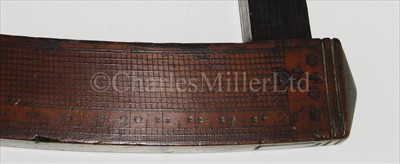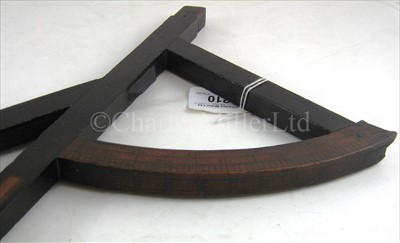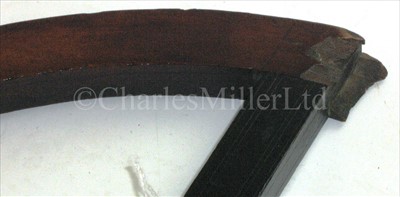1st May, 2013 12:00
Maritime and Scientific Models, Instruments & Art (Excellent)
210
[M] The Peter James McSloy Collection<br/><br/>Peter James...
Peter James McSloy, 1946-2012.
Born in London, Peter McSloy was an undergraduate at the London School of Economics before completing a Masters degree at the Fletcher School of Law and Diplomacy in Boston, Massachusetts. A successful career in investment banking ensued and gave him the opportunity to travel widely. It was on a trip to Athens that a chance encounter triggered a fascination for and study of early marine navigational instruments that would last for the rest of his life. As he honed his knowledge he specialised, almost exclusively, in English instruments between 1740-1820 and, to that end used some of the best-known contacts in the scientific trade to establish a small but high-quality collection which encompasses some of the great names in the field. Whilst there are examples by George Adams and Edward Nairne, it is clear that his highest regard was reserved for the workshops of the great master of the late 18th Century, Jesse Ramsden, and there are no less than four examples by this maker with another by his successor, Matthew Berge. It was his intention to demonstrate the evolution of this instrument and the earliest is an unsigned Davis back-staff, with the latest being a spontaneous purchase at a Dutch street market comprising a late 19th Century sextant by Boosmann of Amsterdam. Peter greatly enjoyed studying and researching this subject and it is his family's wish for these instruments to pass on to other collectors with a similar interest and passion.
AN 18TH-CENTURY ENGLISH ROSEWOOD AND BOXWOOD BACK-STAFF
unsigned, divided over one side, the great arc to 35°, the small arc to 60° -- 25in. (63.5cm.) diameter
Sold for £2,976
Estimated at £700 - £900
(inc. buyer's premium of 24%)
Condition Report
Missing last 3º from end of lesser arc scale; boxwood scales have darkened with age but are still clear; small chip from scroll end of great arc; typical age-marks to frame, which remains in good structural condition overall.
We are pleased to provide you with a general report of the condition of this property. Since we are not professional conservators or restorers, we urge you to consult with a restorer or conservator of your choice who will be better able to provide a detailed, professional report. Prospective buyers should inspect each lot to satisfy themselves as to condition and must understand that any statement made by Charles Miller Ltd is merely a subjective, qualified opinion. Prospective buyers should also refer to any Important Notices regarding this sale, which are printed in the Sale Catalogue. NOTWITHSTANDING THIS REPORT OR ANY DISCUSSIONS CONCERNING A LOT, ALL LOTS ARE OFFERED AND SOLD “AS IS” IN ACCORDANCE WITH THE CONDITIONS OF BUSINESS PRINTED IN THE SALE CATALOGUE.
Peter James McSloy, 1946-2012.
Born in London, Peter McSloy was an undergraduate at the London School of Economics before completing a Masters degree at the Fletcher School of Law and Diplomacy in Boston, Massachusetts. A successful career in investment banking ensued and gave him the opportunity to travel widely. It was on a trip to Athens that a chance encounter triggered a fascination for and study of early marine navigational instruments that would last for the rest of his life. As he honed his knowledge he specialised, almost exclusively, in English instruments between 1740-1820 and, to that end used some of the best-known contacts in the scientific trade to establish a small but high-quality collection which encompasses some of the great names in the field. Whilst there are examples by George Adams and Edward Nairne, it is clear that his highest regard was reserved for the workshops of the great master of the late 18th Century, Jesse Ramsden, and there are no less than four examples by this maker with another by his successor, Matthew Berge. It was his intention to demonstrate the evolution of this instrument and the earliest is an unsigned Davis back-staff, with the latest being a spontaneous purchase at a Dutch street market comprising a late 19th Century sextant by Boosmann of Amsterdam. Peter greatly enjoyed studying and researching this subject and it is his family's wish for these instruments to pass on to other collectors with a similar interest and passion.
AN 18TH-CENTURY ENGLISH ROSEWOOD AND BOXWOOD BACK-STAFF
unsigned, divided over one side, the great arc to 35°, the small arc to 60° -- 25in. (63.5cm.) diameter
Auction: Maritime and Scientific Models, Instruments & Art (Excellent), 1st May, 2013

